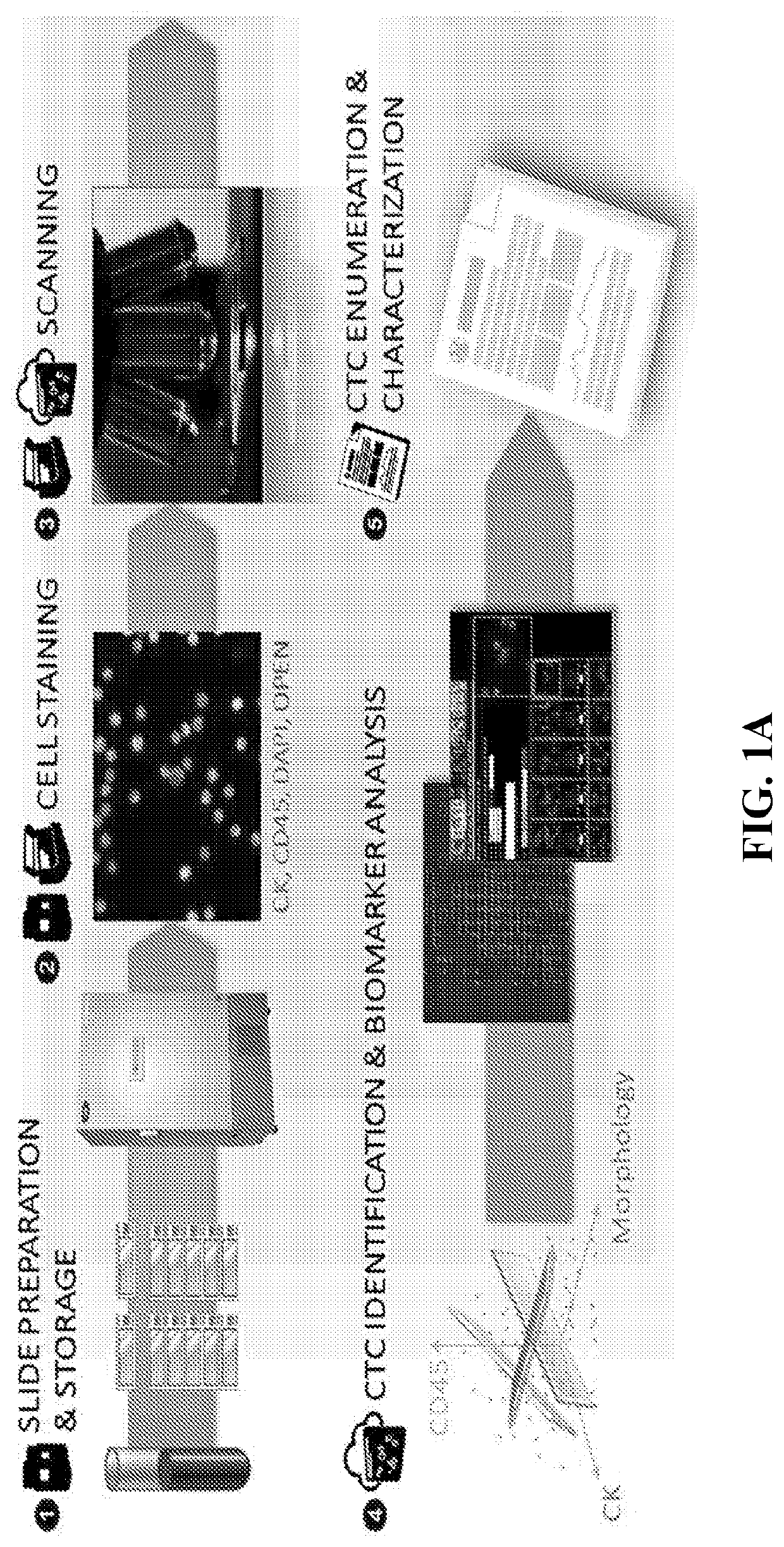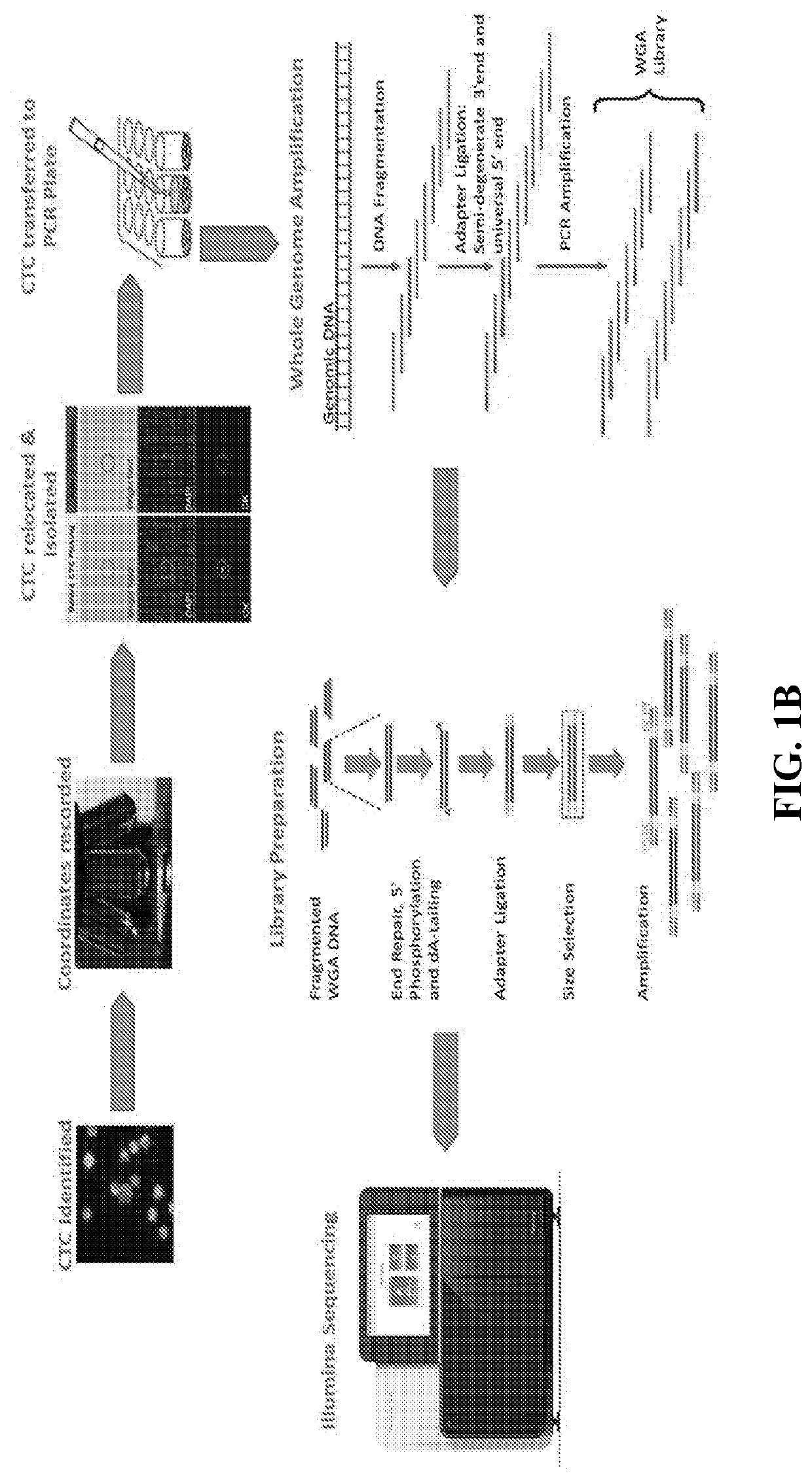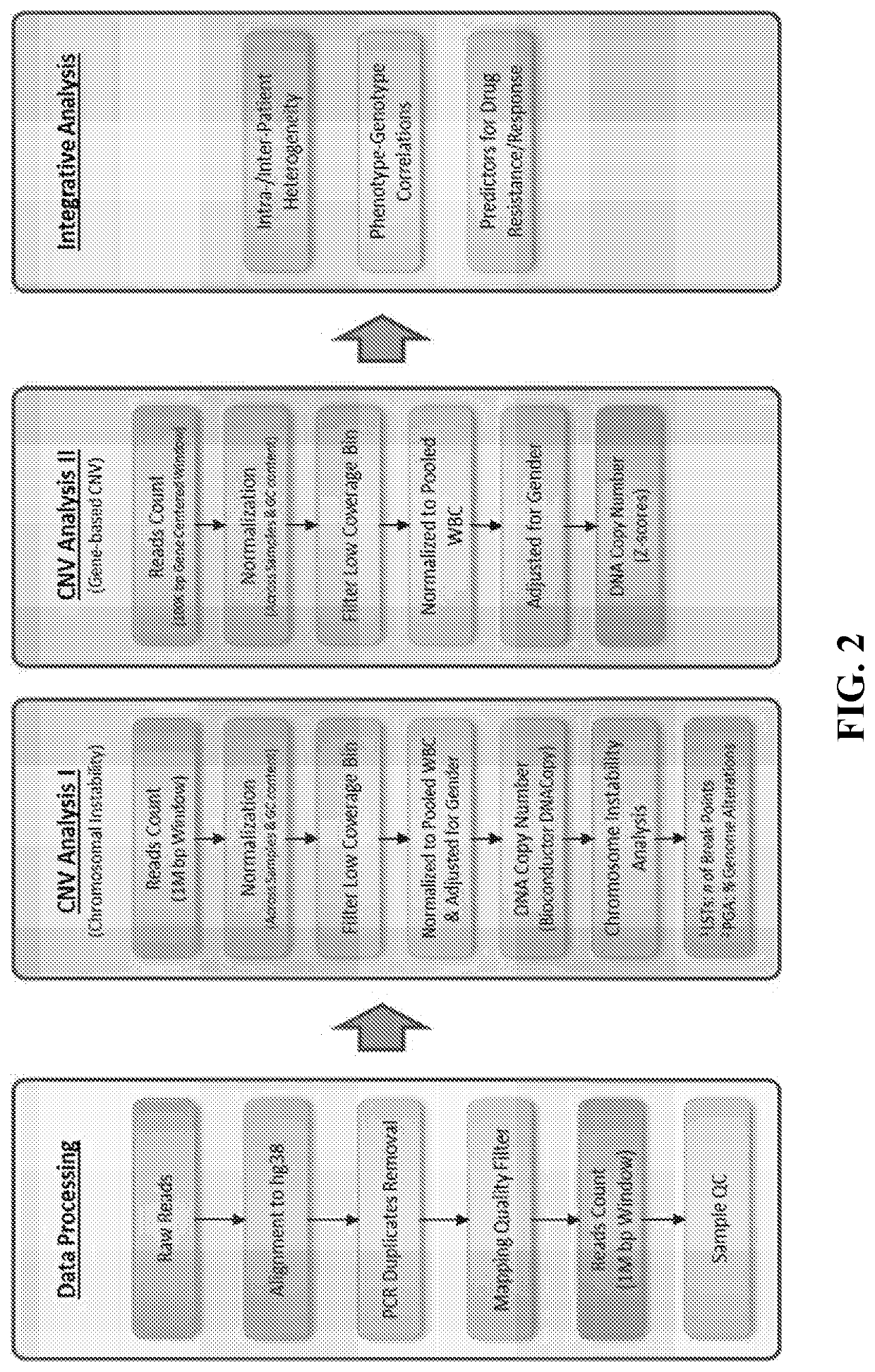Methods of determining therapies based on single cell characterization of circulating tumor cells (CTCS) in metastatic disease
a single cell, metastatic disease technology, applied in the direction of biological material analysis, instruments, material analysis, etc., can solve the problems of no treatment proven to improve the survival rate of mcrpc men, no benefit in terms of overall survival, and significant clinical challenge in the treatment of patients with mcrpc. achieve the effect of high nuclear entropy
- Summary
- Abstract
- Description
- Claims
- Application Information
AI Technical Summary
Benefits of technology
Problems solved by technology
Method used
Image
Examples
example 1
[0194]Sample evaluation for CTCs was performed as reported previously using the Epic Sciences Platform. Marrinucci et al. Phys Biol 9:016003, 2012. The Epic CTC collection and detection process, which flows as follows: (1) Blood lysed, nucleated cells from blood sample placed onto slides; (2) Slides stored in −80C biorepository; (3) Slides stained with CK, CD45, DAPI and AR; (4) Slides scanned; (5) Multi-parametric digital pathology algorithms run, and (6) Software and human reader confirmation of CTCs & quantitation of biomarker expression. During the subsequent CTC recovery and genomic profiling workflow, individual cells were isolated, subjected to Whole Genome Amplification, and NGS library preparation. Sequencing was performed on an Illumina NextSeq 500.
[0195]Blood samples underwent hemolysis, centrifugation, re-suspension and plating onto slides, followed by −80° C. storage. Prior to analysis, slides were thawed, labeled by immunofluorescence (pan cytokeratin, CD45, DAPI) and ...
example 2
Single CTC Characterization Identifies Phenotypic and Genomic Heterogeneity as a Mechanism of Resistance to Androgen Receptor Signaling Directed Therapies (AR Tx) in mCRPC Patients
[0198]Tumor heterogeneity (diversity) has been proposed as a biomarker of sensitivity. This example demonstrates analysis of heterogeneity in CTCs on a cell by cell basis to as a predictive biomarker of sensitivity at decision points in management aiming to better sequence available therapies.
[0199]An initial focus was to characterize CTC's at phenotypic (facial recognition) or cellular level, including variations in morphology and protein expression of cells that emerge from a single clone (lineage switching or plasticity), for example, AR+→AR− neuroendocrine with TMPRSS2-ERG fusion.
[0200]CTCs were isolated using a “no cell selection” platform and analyzed at the single cell level by morphology / protein chemistry (Facial Recognition) (FIG. 5). No Cell Selection enables characterization of any rare cell typ...
example 3
Development of a Liquid Biopsy HRD+Signature
[0218]This example demonstrates the development of CTC based methods to detect HRD in circulating tumor cells (CTCs) isolated from a simple peripheral blood draw at critical clinical decision points prior to treatment. Trained with HRD genomic alterations (LSTs) detected by >600 individual CTCs sequenced, multi-parametric high content image analysis algorithms were used to determine the HRD status of individual CTCs based on cellular and nuclear morphological features that are associated with these alterations. Based on the subclonal prevalence of CTCs with HRD+ phenotypes within both heterogeneous and homogeneous disease states, this test can predict HRD genomics with 78% accuracy and 86% specificity at the cellular level. Utilizing patient scoring guides improves HRD+phenotypic accuracy to 95% at the patient level.
[0219]Epic Sciences HRD+ signature prevalence and clinical validity: In a validation cohorts of 168 and 86 mCRPC patients, th...
PUM
| Property | Measurement | Unit |
|---|---|---|
| nuclear area | aaaaa | aaaaa |
| nuclear area | aaaaa | aaaaa |
| nuclear area | aaaaa | aaaaa |
Abstract
Description
Claims
Application Information
 Login to View More
Login to View More - R&D
- Intellectual Property
- Life Sciences
- Materials
- Tech Scout
- Unparalleled Data Quality
- Higher Quality Content
- 60% Fewer Hallucinations
Browse by: Latest US Patents, China's latest patents, Technical Efficacy Thesaurus, Application Domain, Technology Topic, Popular Technical Reports.
© 2025 PatSnap. All rights reserved.Legal|Privacy policy|Modern Slavery Act Transparency Statement|Sitemap|About US| Contact US: help@patsnap.com



